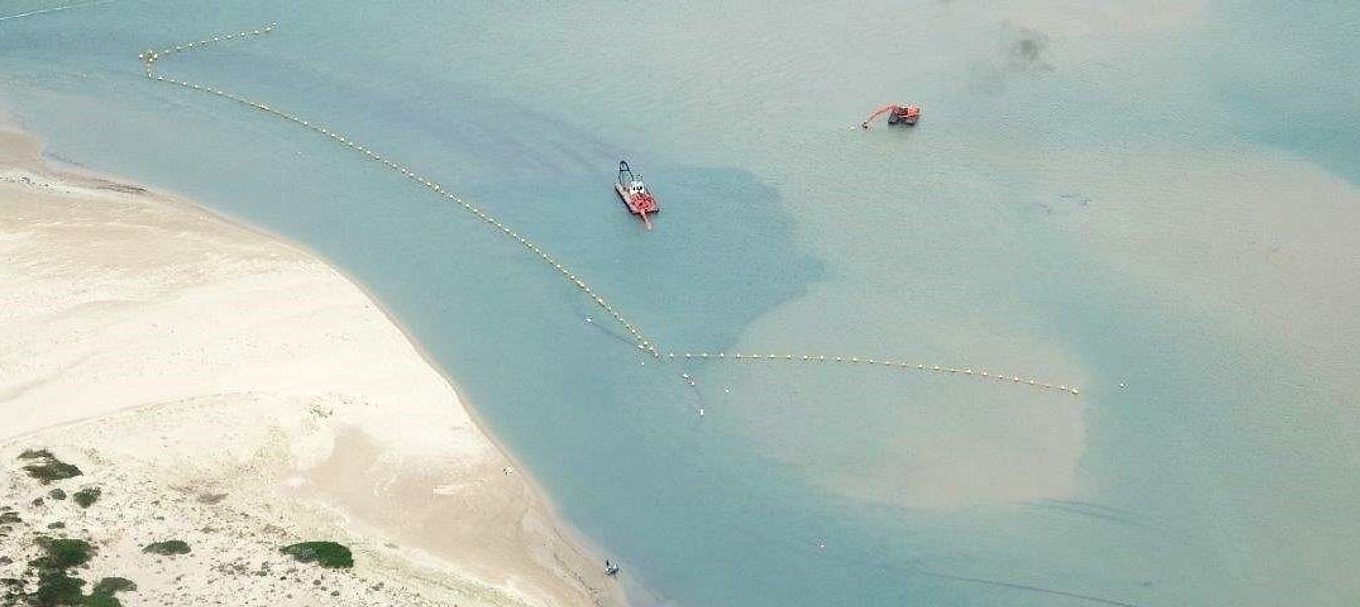
Opening the mouth
Even in our hi-tech world, sometimes the simple ways are the best, and keeping the Murray Mouth open would be best achieved with enough water travelling all the way down the river to the mouth, consistently.
That’s not always possible, so to open the mouth of our great river to the sea without the high volumes of water, we need to take a last resort approach with dredging to remove the excess sand.
Two large dredges have been operating in the Goolwa and Tauwitchere channels near Goolwa since early January, keeping open the connections between the Murray, the Southern Ocean and the Coorong.
If we didn’t do this there could be damaging repercussions for the local ecosystem and for the people who live, work and relax in the area. If the Murray Mouth closes over, water temperatures might rise, the Coorong could become more saline, and plant and animal life would be affected.
Dredges are not only the most cost effective and most efficient response when we don’t have continuous high river flows, they also allow life to go on around them with minimal interruption.
In racing terminology, these guys are “stayers” rather than “sprinters”. They keep going 24/7, methodically removing the sand according to a plan.
And it’s actually well worth watching the next time you are in the area. With a pair of binoculars you can get a pretty good view of the dredging from the southern shore of Hindmarsh Island.
If you are walking along the beach or boating in the area please take care to stay clear of the marked exclusion zones, they are there for your safety. But there is still plenty to see. Keep an eye out for local birds such as sand pipers, plovers and stilts, and native grasses and shrubs like samphire.
This is all necessary, of course, because when it’s dry throughout southeast Australia water flow down the Murray is insufficient to prevent the sand build up naturally.
As many South Australians would know, we dredged constantly during the drought years from 2002 to 2010. This stopped when flows improved but we constantly monitor the situation.
The current dredging program is funded jointly by the South Australian, Victorian, NSW and Commonwealth Governments.
The long-term aim is to bring about changes that minimise the number and frequency of these “low flow” periods, but it’s likely that we may need to call in the dredges occasionally. That’s the way nature is.





